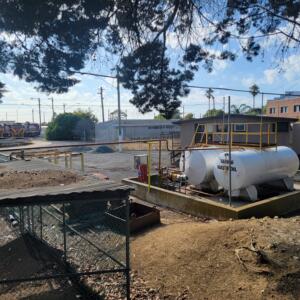Investigation of Council Land on a precinct scale to map recommendations for Environmental Audit Overlay areas to be incorporated into new Urban Development Frameworks and Planning Scheme Amendments.
Landserv carried out a review of 2,800 properties within an area proposed for an Urban Design Framework to assess for the likelihood of Potentially Contaminated Land (PCL).
The Urban Design Frameworks (UDF) being developed by our Council client are intended to provide a long-term vision for each of the three UDF precincts we investigated, including land use and built form controls.
Council is required under Ministerial Direction Number 1 to ensure that a Preliminary Risk Screening Assessment (PRSA) or environmental audit are carried out on any PCL before it is repurposed for a more sensitive land use such as residential housing or childcare facilities.
Environmental Audit Overlays provide an opportunity to defer the PRSA or environmental audit until a planning permit application is made, rather than having to complete those processes before adopting the UDFs and applying the Planning Scheme Amendments (PSA’s). Landserv assisted our Council client to understand the potential for contamination throughout the UDF areas and, where appropriate, avoid placing onerous environmental audit overlays where they were not necessary.
The three UDF areas assessed by Landserv through information searches, desktop research and kerbside inspections. We reviewed the land use history of 2,800 properties to understand their potential for contamination, including a systematic review of EPA, Council and other databases, historical aerial images and historical reports. The likelihood of each site being potentially contaminated was determined based on these records and some areas were identified with a history of industrial or other potentially contaminating land uses. The results of Landserv’s research were reported in Council’s property database using a ‘traffic light’ approach.
Once adopted, the UDFs will allow for the redevelopment of some PCL, therefore presenting an opportunity to manage contamination, mitigate any risks to human health and the environment and ultimately make the land suitable for residential types of redevelopment.
Benefits:
- A cost-effective approach to assessing a large portfolio of properties
- An evidence-based approach for the desktop assessment of Potentially Contaminated Land (PCL)
- Allocation of PCL likelihood categories as a tool for environmental audit overlay application and future assessment requirements.
- A visual database approach that informs Council, allowing management of PCL and minimisation of environmental risk.




